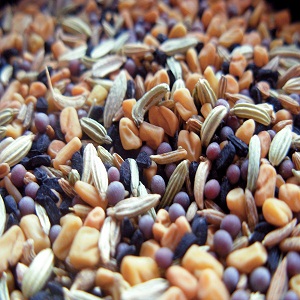How to Save Seeds from Garden Vegetables

Your vegetable garden not only provides you with fresh produce this year but also makes sure that you have the raw material you need to replicate them the next year. Vegetable seeds are the basic raw materials you need to grow your own vegetables each year. Saving your own seeds for plantation comes with two advantages over buying commercially. The first one is that you save the cost of buying new seeds. Saving your seeds has no cost at all and this way you grow vegetables without paying for new ones. The second advantage is that you are sure of the quality of vegetables that will grow. Like once you are satisfied with a certain tomato patch, you can replicate the same quality next season by using the seeds of these tomatoes. Of course there are other elements like saving the trips to the market. Hard core growers also find great satisfaction when they grow their own seeds and reach self-sufficiency. With all these reasons, everyone will be jumping to save their vegetable seeds these years.
Instructions
-
1
What to save:
Though you must be absolutely tempted to save all vegetable seeds, there are a few considerations that you need to take care of. Seeds of hybrid plants are usually not very fertile and there is little benefit of storing them. Seeds saved from plants that were infected transmit the disease to the new plants and even kill them. So choose seeds from healthy plants. Some plants are also cross pollinated and are not suitable for saving. This leaves us with some specific vegetable varieties that are commonly saved. These include heirloom varieties. Some of the most commonly saved seeds are of tomatoes, beans, lettuce, melons, cucumber, pumpkin, squash and peppers. Within these varieties, choose seeds out of the best harvest. -
2
When to save:
You will have to wait until the end of the season to start saving the seeds. Seeds should only be saved after the plant has gone mature. You know the plant is mature when the flowers have gone dry and most seeds turn a dark brown colour. However, do protect the seeds from birds and wind.
Seeds of some plants should be prepared for saving using the dry method. These plants are peas, onions, carrots, corn. You just have to lay the seeds on a screen to dry them before saving them.
Seeds of plants like Tomatoes, melons, squash and cucumber are prepared using the wet method. At first the seeds are soaked in water for a couple of days to kill viruses and separate the good seeds from the bad ones and the pulp. After three four days, the good seeds will sink to the bottom of the tub and can be scooped out and dried on a screen for saving. -
3
Saving seeds:
Choose airtight containers that can be used to store seeds. Clean and dry them up. Fill them with the seeds you wish to save and label them for reference. Make sure that all seeds are dry before storage as the wet ones develop mould.




